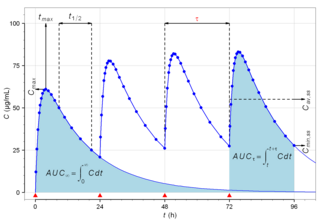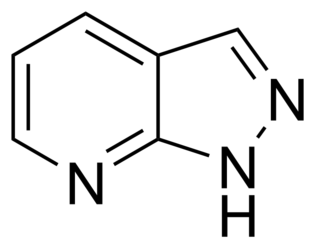
Cocaine is a tropane alkaloid that acts as a central nervous system (CNS) stimulant. As an extract, it is mainly used recreationally, and often illegally for its euphoric and rewarding effects. It is also used in medicine by Indigenous South Americans for various purposes and rarely, but more formally, as a local anaesthetic or diagnostic tool by medical practitioners in more developed countries. It is primarily obtained from the leaves of two Coca species native to South America: Erythroxylum coca and E. novogranatense. After extraction from the plant, and further processing into cocaine hydrochloride, the drug is administered by being either snorted, applied topically to the mouth, or dissolved and injected into a vein. It can also then be turned into free base form, in which it can be heated until sublimated and then the vapours can be inhaled.

3,4-Methylenedioxymethamphetamine (MDMA), commonly known as ecstasy, and molly or mandy, is a potent empathogen–entactogen with stimulant and minor psychedelic properties. Investigational indications include as an adjunct to psychotherapy in the treatment of post-traumatic stress disorder (PTSD) and social anxiety in autism spectrum disorder. The purported pharmacological effects that may be prosocial include altered sensations, increased energy, empathy, and pleasure. When taken by mouth, effects begin in 30 to 45 minutes and last three to six hours.

Lysergic acid diethylamide, commonly known as LSD, and known colloquially as acid or lucy, is a potent psychedelic drug. Effects typically include intensified thoughts, emotions, and sensory perception. At sufficiently high dosages, LSD manifests primarily mental, visual, and auditory hallucinations. Dilated pupils, increased blood pressure, and increased body temperature are typical.

Oxycodone, sold under various brand names such as Roxicodone and OxyContin, is a semi-synthetic opioid used medically for treatment of moderate to severe pain. It is highly addictive and is a commonly abused drug. It is usually taken by mouth, and is available in immediate-release and controlled-release formulations. Onset of pain relief typically begins within fifteen minutes and lasts for up to six hours with the immediate-release formulation. In the United Kingdom, it is available by injection. Combination products are also available with paracetamol (acetaminophen), ibuprofen, naloxone, naltrexone, and aspirin.

Ibuprofen is a nonsteroidal anti-inflammatory drug (NSAID) that is used to relieve pain, fever, and inflammation. This includes painful menstrual periods, migraines, and rheumatoid arthritis. It may also be used to close a patent ductus arteriosus in a premature baby. It can be used orally or intravenously. It typically begins working within an hour.

Amitriptyline, sold under the brand name Elavil among others, is a tricyclic antidepressant primarily used to treat major depressive disorder, a variety of pain syndromes such as neuropathic pain, fibromyalgia, migraine and tension headaches. Due to the frequency and prominence of side effects, amitriptyline is generally considered a second-line therapy for these indications.
Decriminalization or decriminalisation is the legislative process which removes prosecutions against an action so that the action remains illegal but has no criminal penalties or at most some civil fine. This reform is sometimes applied retroactively but otherwise comes into force from either the enactment of the law or from a specified date. In some cases regulated permits or fines may still apply, and associated aspects of the original criminalized act may remain or become specifically classified as crimes. The term was coined by anthropologist Jennifer James to express sex workers' movements' "goals of removing laws used to target prostitutes", although it is now commonly applied to drug policies. The reverse process is criminalization.
In pharmacology, the volume of distribution is the theoretical volume that would be necessary to contain the total amount of an administered drug at the same concentration that it is observed in the blood plasma. In other words, it is the ratio of amount of drug in a body (dose) to concentration of the drug that is measured in blood, plasma, and un-bound in interstitial fluid.

Cannabis, also known as marijuana or weed among other names, is a psychoactive drug from the cannabis plant. Native to Central or South Asia, the cannabis plant has been used as a drug for both recreational and entheogenic purposes and in various traditional medicines for centuries. Tetrahydrocannabinol (THC) is the main psychoactive component of cannabis, which is one of the 483 known compounds in the plant, including at least 65 other cannabinoids, such as cannabidiol (CBD). Cannabis can be used by smoking, vaporizing, within food, or as an extract.
The DrugBank database is a comprehensive, freely accessible, online database containing information on drugs and drug targets created and maintained by the University of Alberta and The Metabolomics Innovation Centre located in Alberta, Canada. As both a bioinformatics and a cheminformatics resource, DrugBank combines detailed drug data with comprehensive drug target information. DrugBank has used content from Wikipedia; Wikipedia also often links to Drugbank, posing potential circular reporting issues.

Flurbiprofen is a member of the phenylalkanoic acid derivative family of nonsteroidal anti-inflammatory drugs (NSAIDs). It is primarily indicated as a pre-operative anti-miotic as well as orally for arthritis or dental pain. Side effects are analogous to those of ibuprofen.
American Society of Health-System Pharmacists (ASHP) is a professional organization that represents pharmacists who serve as patient care providers in hospitals, health systems, ambulatory clinics, and other healthcare settings. The organization's nearly 60,000 members include pharmacists, student pharmacists, and pharmacy technicians. ASHP maintains a national database on U.S. drug shortages that is published on their website.

Orciprenaline, also known as metaproterenol, is a bronchodilator used in the treatment of asthma. Orciprenaline is a moderately selective β2 adrenergic receptor agonist that stimulates receptors of the smooth muscle in the lungs, uterus, and vasculature supplying skeletal muscle, with minimal or no effect on α adrenergic receptors. The pharmacologic effects of β adrenergic agonist drugs, such as orciprenaline, are at least in part attributable to stimulation through β adrenergic receptors of intracellular adenylyl cyclase, the enzyme which catalyzes the conversion of ATP to cAMP. Increased cAMP levels are associated with relaxation of bronchial smooth muscle and inhibition of release of mediators of immediate hypersensitivity from many cells, especially from mast cells.

Pharmacokinetics, sometimes abbreviated as PK, is a branch of pharmacology dedicated to describing how the body affects a specific substance after administration. The substances of interest include any chemical xenobiotic such as pharmaceutical drugs, pesticides, food additives, cosmetics, etc. It attempts to analyze chemical metabolism and to discover the fate of a chemical from the moment that it is administered up to the point at which it is completely eliminated from the body. Pharmacokinetics is based on mathematical modeling that places great emphasis on the relationship between drug plasma concentration and the time elapsed since the drug's administration. Pharmacokinetics is the study of how an organism affects the drug, whereas pharmacodynamics (PD) is the study of how the drug affects the organism. Both together influence dosing, benefit, and adverse effects, as seen in PK/PD models.
In chemistry, a precursor is a compound that participates in a chemical reaction that produces another compound.

Alberto Espinoza Barrón is a Mexican former drug trafficker and lieutenant of the La Familia Michoacana drug cartel.

AL-38022A is an indazole derivative drug which is one of a range of similar drugs developed for scientific research and with some possible clinical applications. It acts as a potent and selective agonist for the 5-HT2 family of serotonin receptors, with highest binding affinity for the 5-HT2C subtype and around four times less affinity for 5-HT2A and 5-HT2B. In drug discrimination tests on animals, it fully substituted for both DOM and 5-MeO-DMT.

The pyrazolopyridines are a group of drugs investigated as anxiolytics which act as positive allosteric modulators of the GABAA receptor via the barbiturate binding site. They include the following compounds:

5-Androstenedione, also known as androst-5-ene-3,17-dione, is a prohormone of testosterone. The World Anti-Doping Agency prohibits its use in athletes. In the United States, it is a controlled substance.

Estrone methyl ether, or estrone 3-methyl ether, is a synthetic estrogen and estrogen ether – specifically, the C3 methyl ether of estrone – which was never marketed. It has been used to synthesize mestranol.














